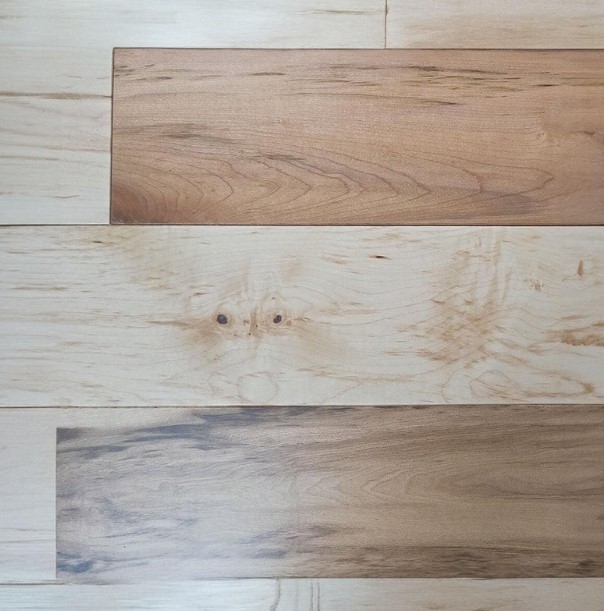Hardwood flooring has long been associated with elegance, warmth, and natural charm. Whether you’re building a new home or renovating an existing one, hardwood floors remain one of the most desirable and enduring flooring options. Known for their longevity, versatility, and ability to enhance property value, hardwood floors can suit both classic and contemporary design aesthetics.
In this article, we’ll explore the types, benefits, applications, and care tips for hardwood flooring to help you make an informed decision.
What Is Hardwood Flooring?
Hardwood flooring is made from solid or engineered wood planks derived from various tree species. Each plank showcases the unique grain, color, and texture of the wood, contributing to the overall character of a room.
There are two main categories of hardwood flooring:
- Solid Hardwood: Made from a single piece of wood, usually ¾ inch thick. It can be sanded and refinished multiple times, making it a long-lasting option.
- Engineered Hardwood: Constructed from a thin layer of hardwood on top of a core made from plywood or high-density fiberboard. It’s more resistant to moisture and temperature changes and can be installed in a wider range of environments, including basements.
Popular Wood Species for Flooring
The species of wood you choose affects the floor’s appearance, durability, and price. Some of the most common hardwood flooring species include:
- Oak (Red and White): Durable, widely available, and features a strong grain pattern. Oak is one of the most popular choices for flooring.
- Maple: Light in color with a smooth grain. It’s harder than oak and ideal for high-traffic areas.
- Hickory: Extremely hard and resistant to wear. Its varied grain and color provide a rustic look.
- Walnut: Rich, dark brown wood with a straight grain. While softer than oak, it adds luxurious warmth to interiors.
- Cherry: Reddish-brown wood that darkens over time. Softer than many other hardwoods, it’s best for low-traffic areas.
- Ash and Birch: Offer light tones and straight grain, great for contemporary or Scandinavian-style interiors.
Benefits of Hardwood Flooring
Hardwood flooring offers a range of benefits, both functional and aesthetic:
1. Durability and Longevity
Hardwood floors are built to last. With proper care, solid hardwood can endure for decades and even centuries. Engineered hardwood, while not as long-lived as solid wood, still offers impressive durability.
2. Timeless Aesthetic Appeal
Hardwood has a classic and natural beauty that never goes out of style. Its rich tones and unique grains create visual interest, and it can be refinished to change its color or restore its original appearance.
3. Increased Property Value
Homes with hardwood floors often sell faster and at higher prices. Buyers view hardwood as a premium feature, especially when compared to carpet or vinyl.
4. Easy Maintenance
Hardwood flooring is relatively easy to clean. Regular sweeping or vacuuming, occasional damp mopping, and quick spill cleanup help maintain its appearance.
5. Improved Indoor Air Quality
Unlike carpet, hardwood doesn’t trap allergens like dust, pet dander, or pollen, making it a healthier option for allergy sufferers.
6. Sustainability
Many hardwood floors are sourced from sustainably managed forests. Look for certifications like FSC (Forest Stewardship Council) if environmental impact is a concern.
Where to Use Hardwood Flooring
Hardwood is suitable for a variety of rooms, but it’s important to consider the environment:
- Living Rooms and Bedrooms: Ideal spaces for both solid and engineered wood due to lower moisture exposure.
- Hallways and Staircases: High-traffic areas benefit from harder wood species.
- Kitchens: Engineered hardwood is often better here due to moisture and spills, although solid wood can be used with caution.
- Basements: Engineered hardwood is a better choice since it’s less likely to warp from humidity.
- Bathrooms and Laundry Rooms: Generally not recommended, as water and humidity can damage wood over time.
Installation Options
There are several installation methods depending on the product and subfloor:
- Nail Down: Common for solid hardwood on wooden subfloors.
- Glue Down: Often used for engineered wood or when installing over concrete.
- Floating Floor: Planks click together and “float” above the subfloor. Suitable for engineered products and easy DIY projects.
Care and Maintenance
To keep hardwood floors looking their best:
- Sweep or vacuum regularly to remove debris.
- Use mats or rugs in high-traffic areas.
- Clean with hardwood-specific cleaners—avoid excessive water.
- Wipe spills immediately to prevent staining.
- Use protective pads on furniture legs to prevent scratches.
- Refinish solid hardwood every 7–15 years as needed.
Final Thoughts
Hardwood flooring is a versatile and valuable investment that enhances both the beauty and function of a home. With numerous wood species, finishes, and installation options, it’s easy to find a hardwood floor that suits your lifestyle and design preferences. Whether you choose solid or engineered wood, proper installation and care will ensure that your floors remain stunning for years to come.
If you’re considering hardwood flooring for your next project, consulting a flooring professional can help you choose the right type and style to match your home’s needs and your personal taste.

